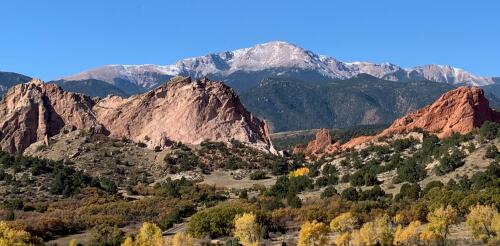Climate change
As the U.S. prepares for another Trump administration, one area unambiguously in the incoming president’s crosshairs is climate policy. Although he has not released an official climate agenda, Donald Trump’s playbook from his last stint in the Oval Office and his frequent complaints about clean energy offer some clues to what’s ahead. Exiting the Paris climate agreement Less than six months into his first presidency, Trump in 2017 formally announced that he was withdrawing the United States from the Paris climate accord – the 2015 international agreement signed by nearly every country as a pledge to work toward keeping rising temperatures and other impacts of climate change in check. This time, a greater but underappreciated risk is that Trump will not stop at the Paris Agreement. Trump attends a session of the United Nations Climate Action Summit in 2019. When he announced he would pull the U.S. out of the Pari...
Carbon offsets have become big business as more companies make promises to protect the climate but can’t meet the goals on their own. When a company buys carbon offsets, it pays a project elsewhere to reduce greenhouse gas emissions on its behalf – by planting trees, for example, or generating renewable energy. The idea is that reducing greenhouse gas emissions anywhere pays off for the global climate. But not all offsets have the same value. There is growing skepticism about many of the offsets sold on voluntary carbon markets. In contrast to compliance markets, where companies buy and sell a limited number of allowances that are issued by regulators, these voluntary carbon markets have few rules that can be enforced consistently. Investigations have found that many voluntary offset projects, forest management projects in particular, have done little to benefit the climate despite their claims. I specialize in sustainable finance and corporate governance. My collea...
The United States is in the midst of the biggest boom in clean energy manufacturing investments in history, spurred by laws like the bipartisan Infrastructure Investment and Jobs Act and the Inflation Reduction Act. These laws have leveraged billions of dollars in government support to drive private sector investments in clean energy supply chains across the country. For several years, one of us, Jay Turner, and his students at Wellesley College have been tracking clean energy investments in the U.S. and sharing the data at The Big Green Machine website. That research shows that companies have announced 225 projects, totaling US$127 billion in investment, and more than 131,000 new jobs since the Inflation Reduction Act became law in 2022. You may have seen news stories that said these projects are at risk of failure or significant delays. In August 2024, the Financial Times reported that 40% of more than 100 projects it evaluated were delayed. These included battery manufacturi...
Wildfires are becoming increasingly destructive across the U.S., as the country is seeing in 2024. Research shows wildfires are up to four times larger and three times more frequent than they were in the 1980s and ‘90s, with some consuming hundreds of thousands of acres. Lightning strikes are one cause, but the majority of wildfires that threaten communities are sparked by human activities. Metal from cars or mowers dragging on the ground can spark fires. A broken power line started the deadly 2023 Maui fire that destroyed the town of Lahaina, Hawaii. California’s largest fire in 2024 started when a man pushed a burning car into a ravine near Chico. The fire destroyed more than 700 homes and buildings. What makes these wildfires so destructive and difficult to contain? The answer lies in a mix of changing climate, the legacy of past land-management practices, and current human activities that are reshaping fire behavior and increasing the risk they pose. Fire...
Around 700 million years ago, the Earth cooled so much that scientists believe massive ice sheets encased the entire planet like a giant snowball. This global deep freeze, known as Snowball Earth, endured for tens of millions of years. Yet, miraculously, early life not only held on, but thrived. When the ice melted and the ground thawed, complex multicellular life emerged, eventually leading to life-forms we recognize today. The Snowball Earth hypothesis has been largely based on evidence from sedimentary rocks exposed in areas that once were along coastlines and shallow seas, as well as climate modeling. Physical evidence that ice sheets covered the interior of continents in warm equatorial regions had eluded scientists – until now. In new research published in the Proceedings of the National Academy of Sciences, our team of geologists describes the missing link, found in an unusual pebbly sandstone encapsulated within the granite that forms Colorado’s Pikes Peak....




